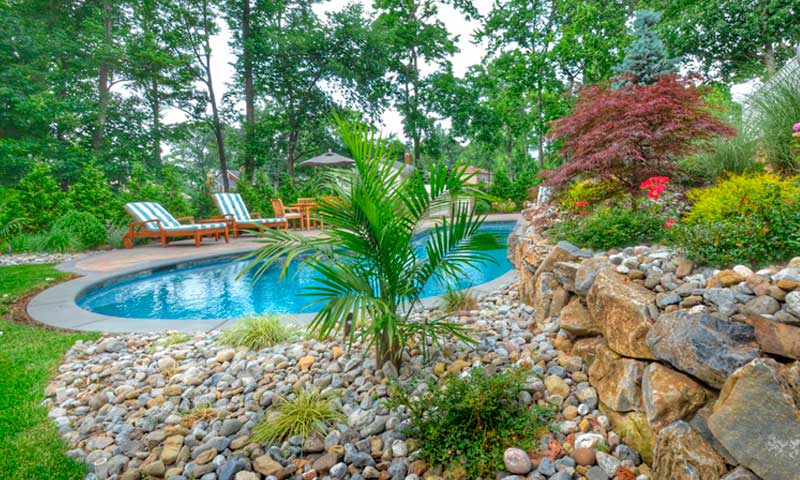Do you love your property’s greenery and flowers but feel that something is missing in your landscaping? Does it lack drama, a natural focal point, a feeling of serenity, or other design element? Landscape architects often recommend using boulders in landscaping to fix these landscape design shortcomings.
Is a Boulder Simply a Rock?
Not exactly. The geological definition of a boulder is a rock that measures over 10.1 inches in diameter.
To calculate a boulder’s weight:
- Measure its length (L), width (W), and height (H), rounded to the nearest foot
- Multiply L x W x H to get the total cubic feet
- Then multiply the number of cubic feet by the weight of the rock type
Three rock compositions common in New Jersey are granite, limestone, and sandstone.
Limestone and sandstone weigh about 150 pounds per cubic foot, while granite weighs in at about 168 pounds per cubic foot. It’s easy to see how boulders can easily weigh hundreds if not thousands of pounds.
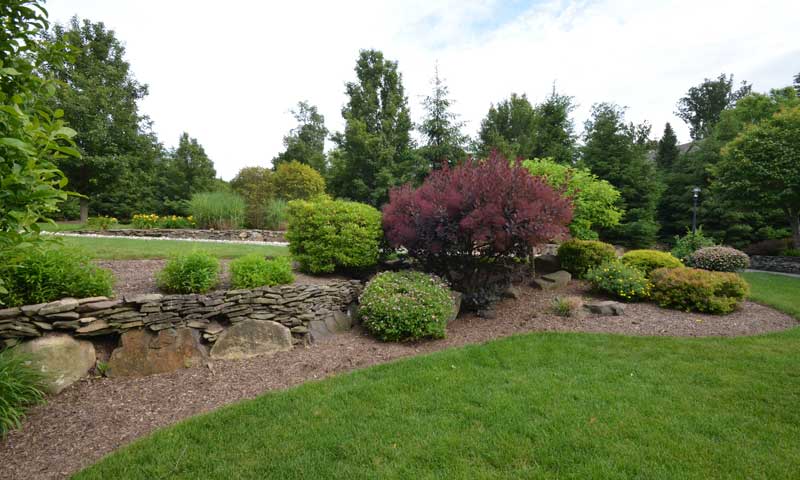
What Makes Boulders So Appealing for Landscaping?
Boulders vary in size, shape, texture, and color. When properly used in landscape design, they create different moods, offer unique looks, and perform important functions.
They are a natural way to add colors and textures to your landscaping.
Once installed properly, boulders are something you will never have to worry about. They will withstand excessive heat, long draughts, and winter storms. They are perfect in our northeastern environment of constantly changing weather.
And boulders don’t require care. They won’t add to the cost of garden maintenance.
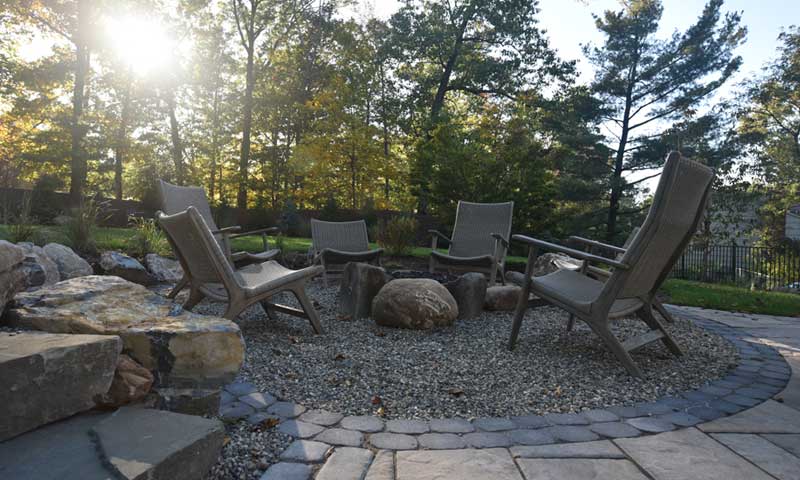
Boulders Improve Landscaping in Many Ways
They can add visual appeal and function.
Fill a space
Do you have a shady area where it’s difficult to grow plants? A boulder surrounded by tall grasses and a few shade-loving plants will make a desolate area feel well-landscaped and complete.
Create a focal point
Strategic boulder placement is so critical that it’s often the first design element addressed in a landscaping plan. It will make the entire landscape feel important and more interesting.
Boulders can draw attention to a specific area on your property. It looks inviting—you want to walk over and see it up close.
Boulders of different shapes and sizes can welcome visitors into your garden. A large properly shaped boulder invites two people to sit and chat.
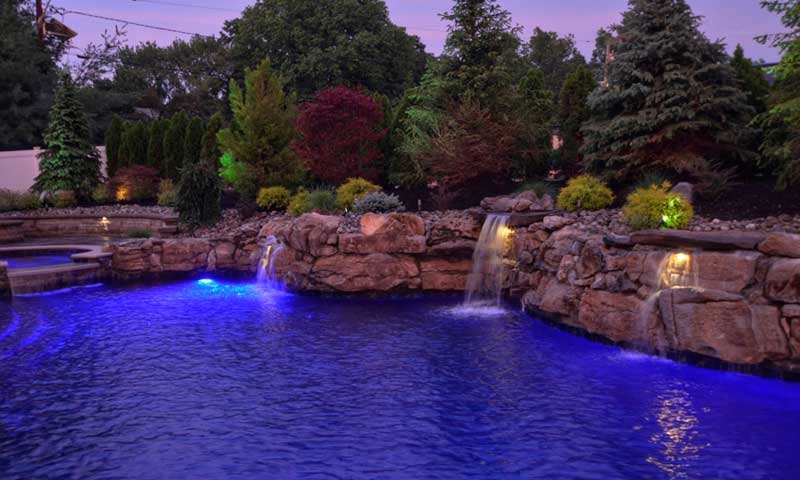
Create drama
Depending on the property, boulders can create an actual or visual waterfall, or other artistic design. Proper boulder placement in landscaping is truly an art form.
Lighting is an exciting way to enhance boulder design. It can emphasize the boulder or elements around it. Uplighting creates even more drama and interest.
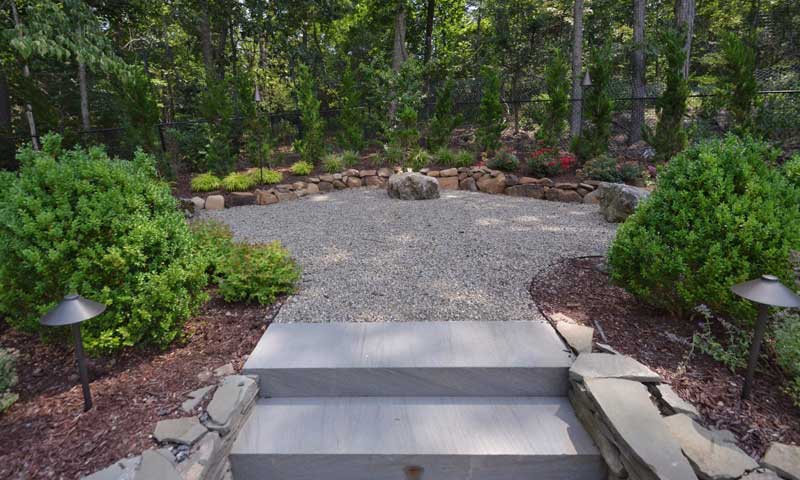
Provide function
Boulder designs can be practical.
Boulders are great for sturdy and natural retaining walls. This helps prevent erosion caused by high winds, storms, and flooding.
Boulders can also be used for a series of retaining walls on a sloped property. The new tiered levels will reduce a steep elevation. You can landscape with plants, trees, bushes, and grasses. This helps reduce soil erosion and stormwater runoff.
Strategically placed boulders can create small walls to secure plant beds and keep loose soil in place.
Add serenity
Large boulders in landscaping give many people a sense of serenity. The boulders have a grounding effect on the spirit as they add a sense of permanence and history. If the boulder affords a place to sit and contemplate, that’s even better.
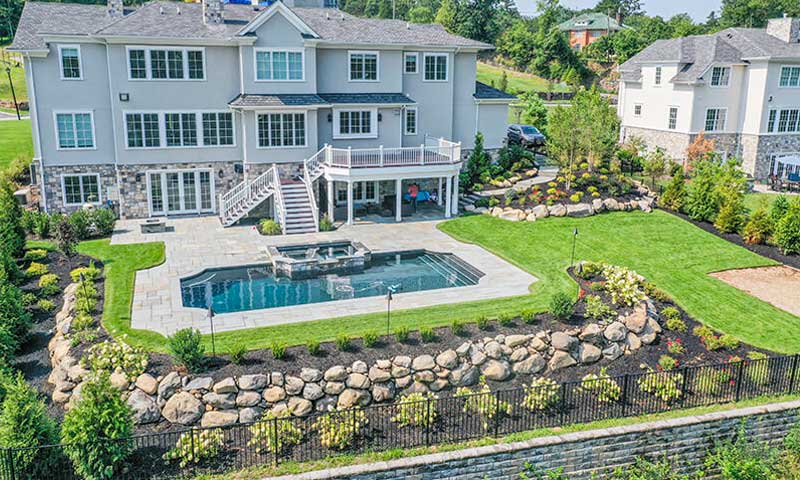
How Many Boulders Is Too Many?
The answer is it all depends on your design.
Sometimes one large boulder in just the right place adds character.
Other landscape designs use many boulders for retaining walls, or to create rock gardens.
Boulders Vary in Shape, Size, Color, and Texture
We generally characterize boulders as being round or angular. Water has smoothed round boulders over time, while angular boulders have a flatter, rougher appearance.
Boulders can also differ by their uniformity of composition.
The color of the boulder(s) you select has a profound impact on your landscaping. Natural colors of boulders range from almost white to black, including shades of browns, golds, pinks, blues, and grays.
Encourage moss and lichen to grow to add additional colors and textures to the mix.
Is It Hard to Work with Boulders?
In a word, yes.
Boulders are not like flowers that you can purchase and bring home to see if they look good in your garden. They are difficult to select, move, and install properly.
Our landscape designers have an excellent eye for which boulders will mix well with the natural rocks already on your property. You want new boulders to look like they appeared naturally in your landscaping.
It’s also difficult to judge the size of the boulders you need. Often people make the mistake of buying boulders that are too small, only to be disappointed by the size once they are delivered.
How Are Large Boulders Moved and Installed?
Landscapers usually move them with a flatbed truck and the aid of a forklift, or other landscaping machinery. The boulder needs to be secured during transport.
If you decide to somehow move it yourself, and the boulder shifts, you can get into an accident or damage your car.
Once the boulder is at your property, someone must properly place it. This is difficult to do without expert experience, the right equipment, and adequate manpower.
Sometimes a boulder is set just a few inches into the ground. Other times you want to set a boulder with 25% of its bottom in the ground. Even heavy boulders can move over time, if not properly placed.
A properly installed boulder is more natural looking and is less likely to crack as time goes by. You also want the boulder to be secure so that people can safely sit on it, and kids can safely play on it.
At Sponzilli Landscape Group, we help homeowners incorporate the beauty of natural boulders into their landscaping. To see how we can help you, contact us today.

